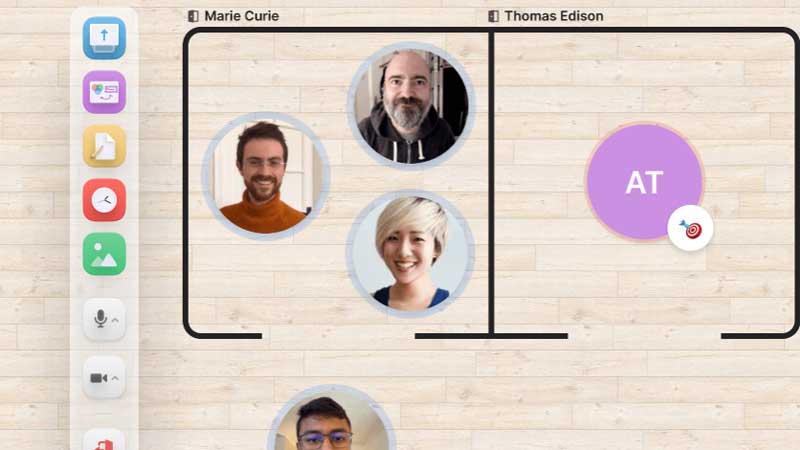 EMERGING TECH
EMERGING TECH
 EMERGING TECH
EMERGING TECH
 EMERGING TECH
EMERGING TECH
Teamflow, a provider of virtual office meeting services, announced Monday it raised $11 million in new funding led by Battery Ventures.
The Series A round follows a seed funding round of $3.9 million led by Menlo Ventures, which the company closed two months ago, and brings the company’s total financing to $14.9 million.
With the COVID-19 pandemic, more businesses have shifted their workforces to remote. As a result, teams have begun to feel the strain of “Zoom fatigue” with the use of video conferencing, email and chat collaboration and the lack of human spaces.
“Remote models have changed everything about the way we work, and now we’re seeing new, innovative tools to help companies manage this new reality — while keeping company culture intact,” said Neeraj Agrawal, a general partner with Battery Ventures.
Teamflow’s platform creates a “virtual office” using a top-down user interface view of chairs, couches and round virtual avatars that display either an image or a webcam view, and people can use arrow keys to move around two-dimensional space.
In that space there is also proximity sound, meaning that as users move near or away from each other, they can hear each other’s microphones louder or softer. That enables groups to gather up to collaborate or even break out to form smaller teams. The interface even enables private rooms for discussions that can be entered or “locked” for discussions.
Users can also place whiteboards, timers, images, documents, and other UI elements into the world that are visible to others, and they can share their screen for presentations.
Since the 2D world is navigable, these elements can be placed around the room space, which means that documents can be laid out in an organized fashion and then traversed as part of a presentation as well.
Hosts can change the environment to include tables, potted plants and different materials for the floor such as marble, concrete or carpet. The customization options are somewhat limited, but they tend to run the gamut of the generic business office with an open floor plan, including enough space for the round avatars to wander around in and experience a sense of telepresence.
Teamflow’s service fits into the product set of team collaboration software with videoconferencing, audio and chat such as Skype, Slack and similar services. However, it’s also a meeting place that doesn’t require expensive hardware or deliver specialized needs such that virtual or augmented reality. All that’s required is a web browser.
Examples of companies providing virtual meeting services include Preciate Inc., which in September launched Preciate Social, a virtual office platform for hosting office parties in a 2D space. And Gather Presence Inc., a 2D business socialization platform that includes outdoor areas for communities, raised $26 million in Series A funding on March 11.
According to Teamflow, the average paying customer on its platform spends eight hours a day on the product, five days a week. Companies using its platform include Autodesk Inc., Walt Disney Co., Mixpanel, Quora, Shopify Inc., Netflix Inc., and Uber Technologies Inc.
“The top priority of most companies this year is to successfully manage their transition to remote or hybrid,” said Florent Crivello, founder and chief executive of Teamflow. “With this growing demand, we are witnessing the birth of a new category of virtual offices, which are a universal need and a huge part of how companies can work productively now and in the future.”
Although many companies are looking forward to a future where workers might come back into offices, the pandemic has been transforming the workplace. According to a survey from Gartner, 82% of companies intend to permit remote work at least some of the time when the pandemic is over and at least 47% will permit workers to remain remote all the time.
That shows a likelihood that increased remote work may become a normalized part of business culture for the foreseeable future. That could fuel the rise of platforms being built by companies such as Teamflow to enable that work and keep people connected.
“With Teamflow in place, we’ve been able to streamline the tools we use for keeping the team connected,” said Rafael Sanches, co-founder and chief executive at Anycart, a fresh grocery delivery service. “We aren’t using email nearly as much, and we’ve stopped using Slack altogether.”
THANK YOU